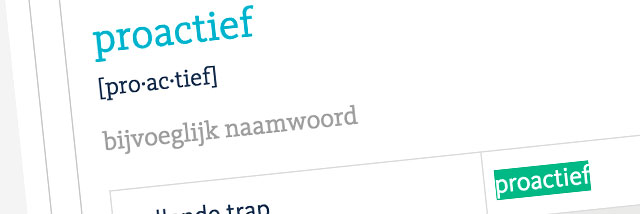How to Make Your Customer Service Proactive?

For most companies, customer service means answering questions as they arise. And many customers will be satisfied with this, but this reactive approach is neither surprising nor revolutionary.
Wouldn’t it be fantastic if you could answer customers’ questions and solve their problems before they even became aware of them? A proactive approach is not only possible but also profitable. This approach prevents many incoming calls and can also increase customer loyalty.
In this article, we explore ways to make your customer service proactive. We provide not only general tips but also specific tricks for Belfabriek customers. This way, you’ll discover the many free extras included with your service number and how to use them to set up proactive customer service.
Map Out Why Customers Call You
To be proactive, it’s important to stay ahead of your customers. And that’s only possible if you know what problems they have and what questions they ask. The first step is to create a list of the most common questions customers call with.
Your initial reaction might be, “But I already know that,” and you’re probably right, but writing it down is still important. It gives you the opportunity to sort and group questions or organize them.
This sorting or organization is crucial for optimizing your customer service setup, as we’ll see later in this article.
To discover what your organization’s list of questions looks like, analyze logged customer service tickets or listen in on calls. The latter is easy and inexpensive for Belfabriek customers. With our extra feature Call Recording, you can record and listen to calls to identify the most frequently asked questions. If you’re already a Belfabriek customer, start today with call recordings using our free Call Recording Starter package.
Answer Questions Before Customers Ask Them
Once you’ve identified the common questions, you can place them along your customers’ ‘lifecycle.’ When do certain questions arise? Chances are, the questions at the first contact are different from those after a purchase or later in your relationship with the customer.
For example, for an airline, customer questions before making a reservation are totally different from questions after purchasing a ticket.
In an online store, you might distinguish questions about order status, placing a new order, or returning/exchanging products.
By starting with a simple initial question like “Press 1 for placing a new order or 2 for questions about an existing order,” you ensure that callers only hear the questions relevant to them, avoiding frustration over wasted time listening to irrelevant questions.
The questions your customers have at different points in the ‘lifecycle’ will depend on your specific product, your relationship with your customers, and many other factors. That’s why it’s so important to make this inventory.
Some of the questions your customers have can undoubtedly be answered through Recorded Messages, freeing up your staff to answer other questions.
If you notice that customers often have the same questions at a certain stage in the lifecycle, consider providing documentation before the question arises. This could be in the form of an e-book sent to customers after a certain period. For example, new Belfabriek customers receive an exclusive e-book explaining how to set up and use their new number. This helps them have a perfectly functioning service number from day one. Alternatively, you could direct customers to a landing page with videos or text and illustrations explaining topics that frequently raise questions.
Analyze the Results of Your Proactivity
You don’t have to take our word for it when we say that a proactive approach is profitable in many ways. As a Belfabriek customer, you can see this for yourself in your online dashboard – Mijn Belfabriek. After implementing the above preparations and switching to a proactive approach, you’ll see spectacular changes in the call statistics. Below are some examples of the improvements other organizations have experienced:
- Lower Average Call Duration When you start answering questions automatically, it can save a lot of call time with your staff. This means you can handle more callers, more calls, and more minutes with the same number of staff.
- More Control Over Incoming Calls By providing customers with the information they need early and through multiple channels, you gain more control over incoming calls. You can use call time more effectively for your organization and your customers.
- Higher Quality Customer Interactions When you anticipate and answer frequently asked (and often simple) questions in advance, customers are better informed, need to call less often, and contact moments are more likely to focus on individual attention where needed. The result is that your product or service is perceived as better.
All these improvements will be directly visible in your call statistics in Mijn Belfabriek.
Apart from call statistics, your own systems may also indicate changes. For example, if you survey callers after calls, you’ll see increased customer satisfaction when everything is implemented correctly. Your staff will notice changes in the nature and duration of calls, with more focus on personal attention for callers and more opportunities to make callers feel special.
As you can see, a proactive approach to handling callers benefits your organization and your customers in many ways, creating a win-win situation.

 Netherlands
Netherlands Belgium
Belgium Denmark
Denmark Germany
Germany France
France Switzerland
Switzerland Austria
Austria UK
UK Spain
Spain Italy
Italy


